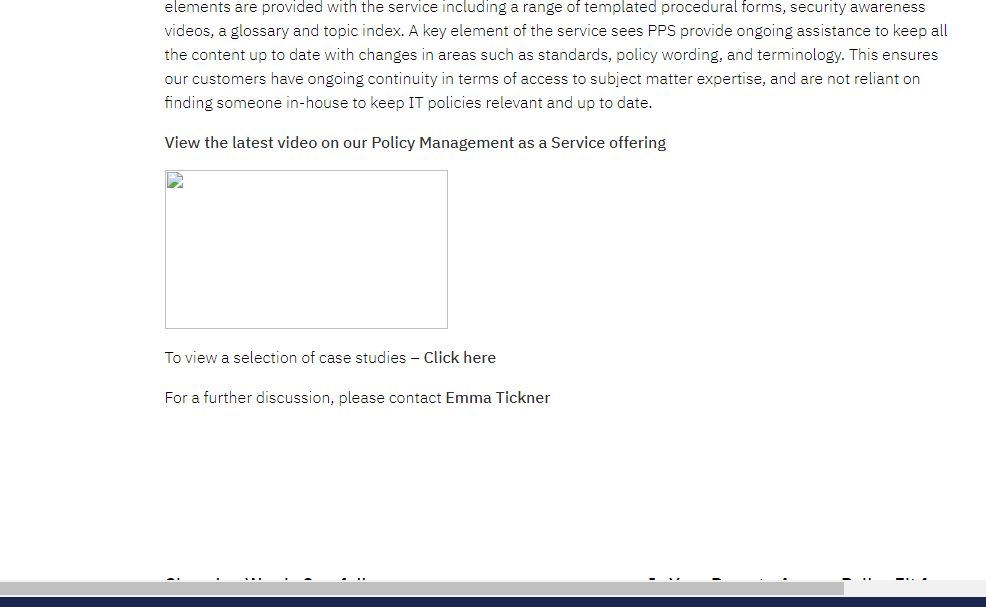NEWSLETTER
Planning For Business Continuity Through Staff Turnovers
July 12, 2022
Steve Macmillan
It’s common knowledge that a company’s most valuable asset is its people, yet information assets are a very close second. An organisation’s IP and data are mission critical, continually developed and improved by existing and new staff. So in the current environment of talent mobility, how does an organisation maintain its data integrity as well as its competitive advantage?
The answer lies in running up-to-date and easy to understand IT policies and procedures. When new and existing staff are clear on information ownership; have the right access permissions; and are cyber aware, an organisation is more resilient and compliant, and less at risk when people leave – IP is defensible and data integrity is maintained. New team members can also get up to speed quickly and efficiently, giving them the knowledge and confidence to operate in a new technology environment.
Staff turnover is a fact of life . . .
Staff continuity presents a major challenge to businesses, more so today than ever. Younger workers are more mobile, spending less time in each role. And in the wake of the Covid pandemic, many employees have returned from lockdown with a new outlook on job flexibility or work–life balance.
There are, of course, other reasons why people move on: they may be unhappy with their manager, company culture or pay-cheque; or they want to take a parenting break or chase other personal goals.
Either way, no staff roll remains unchanged for long. Statistics from the UK, US and New Zealand suggest that the typical organisation can expect an annual staff turnover of around 15–24 per cent. So while it’s vital to look after your staff, you also need to accept some turnover as inevitable.
. . . and it can be costly.
When staff leave, they take their skill-set and knowledge with them – whether it’s a customer-facing role, a business support role, or something else. The disruption can slow your business performance for weeks or even months while replacement employees get up to speed.
According to a report by Whatfix, the average cost of replacing an employee ranges from around 20 per cent of their annual salary to over 200 per cent depending on the type of role. And this financial hit isn’t your only consideration.
When good people leave, especially those who have built strong internal and external relationships, it can dent clients’ and suppliers’ confidence, do the same to your competitive edge, and impact team morale.
Your digital IP, too, can be compromised. Departing staff may take critical data with them – whether negligently (through files left on their laptop, for instance) or deliberately (for profit or sabotage). In recent cases, companies including Tesla, Leica, and software developer BlueScope have taken legal action against departing employees who took data with them.
 Protection through IT policy
Protection through IT policy
While you must accept some turnover, you can safeguard your IP. This comes down to setting rigorous IT policies in place around data access and management, and ensuring they are fully documented. For instance, policies and restraints can be built into the onboarding process, with HR working very closely with IT.
Staff then know exactly where they stand vis-à-vis IP (theirs and the company’s). And also, when an employee leaves the business, the documentation will enable their replacement to hit the ground running. With good policies in place – ones that are easy to access and understand – new staff can get up to speed far more quickly with your organisation’s information management.
Planning ahead
In a survey by Aberdeen Research, only 29 per cent of companies had a formal exit process in place. Rather than be part of the 71 per cent with their heads in the sand, think to yourself, What’s the worst that could happen? Then plan for what to do if it does. For instance:
- Where is your IP located, and what are the biggest risks to your business? Are there areas you can ‘put on pause’ until new staff hires are in place and up to speed?
- Think about those staff who hold confidential IP. Does their contract vest IP in the company – or in them? Likewise, where third-party contractors have access to your data, make sure you enact policies that protect your company.
- Embed digital asset management/recovery into your staff exit processes, so that you recover digital IP that is critical to the company’s profitability. This can cover all manner of things, such as encryption, data logging/monitoring, file-sharing protocols, and more.
- Plan ahead for hiring new staff, whether it’s building a relationship with useful temp agencies or looking at ways to retask key employees to cover gaps temporarily. Is remote working an option?
There are many benefits to thorough continuity planning. Internally, if transitions are efficient, your staff continuity costs will be lower. With smooth staff turnovers, office morale will be sustained, and you’ll instil confidence in other staff, improving retention.
Externally, you will show clients and suppliers that your company is resilient, and this can lead to a better customer experience and maintain or improve business turnover. And you get to protect your company IP.
Find out more
Speak to our team about your best practice in IT policy content.
PROTOCOL POLICY SYSTEMS
Contact Us Today
Fill in the form or call us on (UK) +44 845 241 0099 or (NZ) +64 9 570 2233